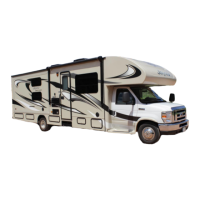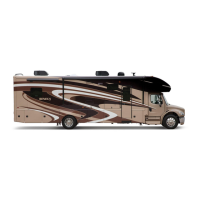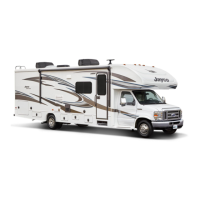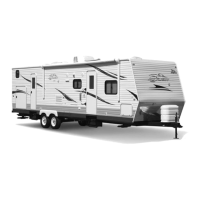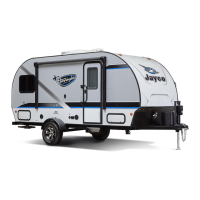4-4
BRAKING & STOPPING
When descending a long hill, drop down into a lower gear (or lower range if you
have automatic transmission). Avoid conditions that require excessive and
prolonged use of your brakes. Apply and release brakes at short intervals to give
them a chance to cool. The vehicle transmission and engine will help in controlling
downhill speed and can lengthen brake life. The distance required to stop the
motor home is greater than an automobile’s. Use care when accelerating or
decelerating on a slippery surface. Abrupt speed changes can cause skidding and
loss of control.
Driving through water deep enough to wet the brakes may affect stopping distance
or cause the vehicle to pull to one side. Check the motor homes brake operation in
a safe area to be sure they have not been affected. Never operate any vehicle if
a difference in braking efficiency is noticeable.
PARKING BRAKE
The parking brake should be engaged when the motor home is parked. Never
drive your motor home with the parking brake set as this will reduce the parking
brake effectiveness and cause excessive wear. For more information refer to your
Chassis Guide.
FRONT AXLE TIRE ALIGNMENT
The term alignment refers to both the adjustment angles on the steering axle and
suspension and tracking of the rear axle. Many factors are considered when
establishing proper alignment. Steering components, suspension, wheel bearings
and even proper loading will affect the alignment.

